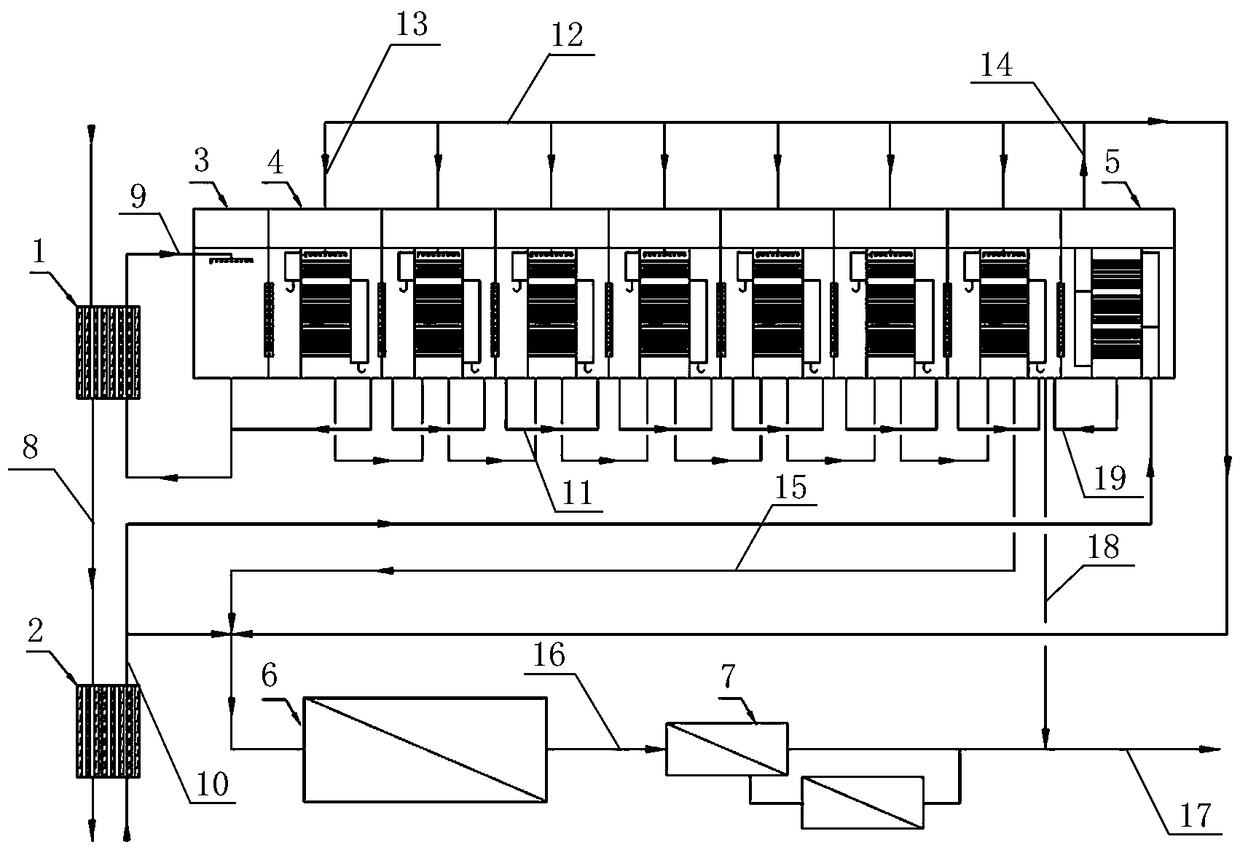Thermal membrane coupling seawater desalination system by using industrial waste heat
An industrial waste heat and thermal film coupling technology, which is applied in seawater treatment, general water supply conservation, heating water/sewage treatment, etc., can solve the problems of low utilization rate of seawater, power consumption, large heat energy consumption, etc.
- Summary
- Abstract
- Description
- Claims
- Application Information
AI Technical Summary
Problems solved by technology
Method used
Image
Examples
Embodiment Construction
[0009] The present invention will be further described below with reference to the accompanying drawings.
[0010] The invention discloses a thermal film coupled seawater desalination system utilizing industrial waste heat, which is different from the prior art in that: the system includes an industrial waste heat utilization unit composed of a primary heat exchanger 1 and a secondary heat exchanger 2, A thermal seawater desalination unit consisting of a flash evaporator 3, an evaporator 4 and a condenser 5, a membrane seawater desalination unit composed of a first-stage reverse osmosis 6 and a second-stage reverse osmosis 7, and the industrial waste heat utilization unit and the thermal method respectively The seawater desalination unit is connected with the membrane method seawater desalination unit, and also includes a main water inlet pipe 12, which is connected to the evaporator 4 through a branch pipeline 13, and the water outlet end of the main water inlet pipe 12 is con...
PUM
 Login to View More
Login to View More Abstract
Description
Claims
Application Information
 Login to View More
Login to View More - R&D Engineer
- R&D Manager
- IP Professional
- Industry Leading Data Capabilities
- Powerful AI technology
- Patent DNA Extraction
Browse by: Latest US Patents, China's latest patents, Technical Efficacy Thesaurus, Application Domain, Technology Topic, Popular Technical Reports.
© 2024 PatSnap. All rights reserved.Legal|Privacy policy|Modern Slavery Act Transparency Statement|Sitemap|About US| Contact US: help@patsnap.com








